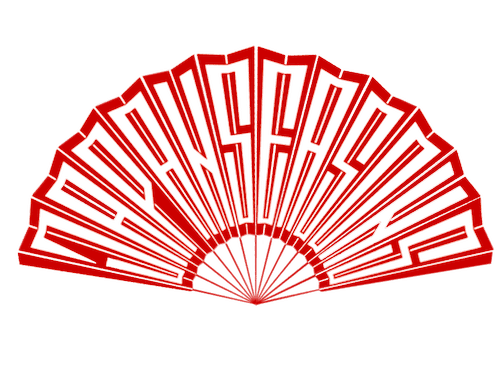Sensoji Temple, located in Tokyo’s historic Asakusa district, is one of the city’s most revered and iconic landmarks. Believed to have been founded in the 7th century, the temple is dedicated to the Bodhisattva Kannon, the Goddess of Mercy. As you approach the temple, you pass through the vibrant Kaminarimon Gate, adorned with a massive red lantern. A bustling market street called Nakamise-dori leads you to the temple’s main hall, where visitors can admire the intricate architecture and serene atmosphere. Sensoji Temple is not only a religious site but also a cultural treasure, offering a glimpse into Tokyo’s rich history and spiritual heritage.
- Tours
- Explore Japan
Japan Grand Tour “Explore Japan”
Welcome to the Grand Tour of Japan!
Join us on an amazing journey through Honshu Island’s major and culturally rich cities. Experience the mix of modern and traditional as you visit bustling cities and peaceful historic towns. Relax in hot spring onsens, take photos of the beautiful Mount Fuji, and explore the gardens and temples of Kyoto and Nara. Enjoy the freshest seafood in Kanazawa, stay overnight in a monastery hotel, and more.
This is the perfect introduction to Japan!
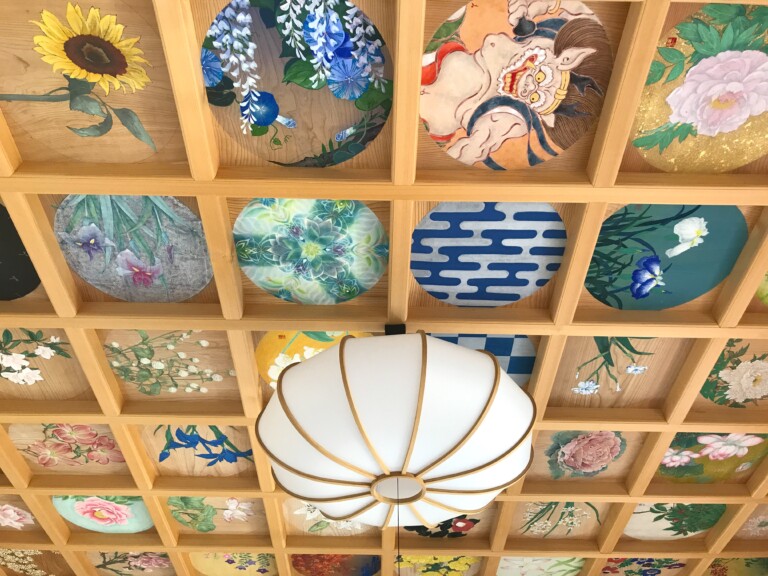
CUSTOMIZED ITINERARY FOR YOUR DATES
Dates
- Private tour
Duration
- 21 days / 20 nights
Price
- On Request
Itinerary
- Tokyo → Kamakura → Hakone → Fuji → Matsumoto → Takayama → Shirakawago → Kanazawa → Kyoto → Nara → Osaka → Koya → Himeji → Okayama → Kurashiki → Miyajima → Tokyo
Daily itinerary
Day 1
Transfer to Tokyo
Check-in at the hotel, rest
Day 2
Meet your tour guide at the hotel lobby
Tokyo sightseeing: Asakusa district, Sensoji Buddhist Temple, Nakamise shopping street, teamLab museum, Japanese garden
Back to the hotel
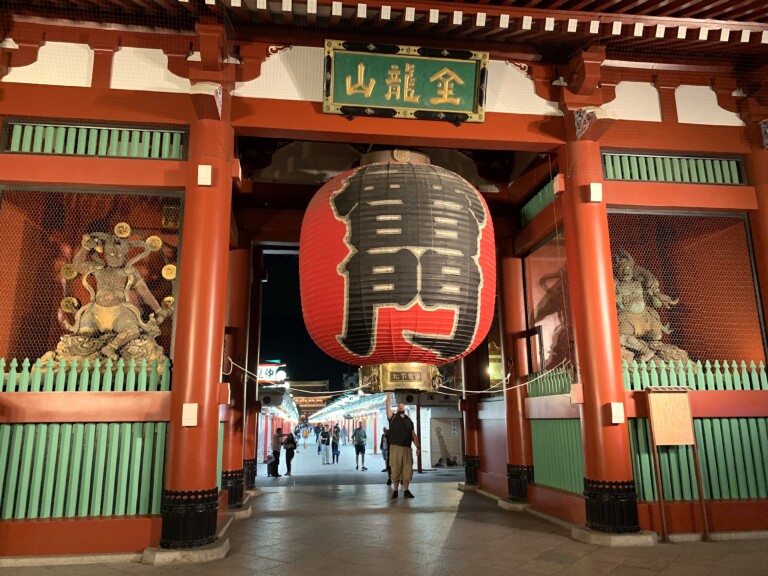
Sensoji Temple
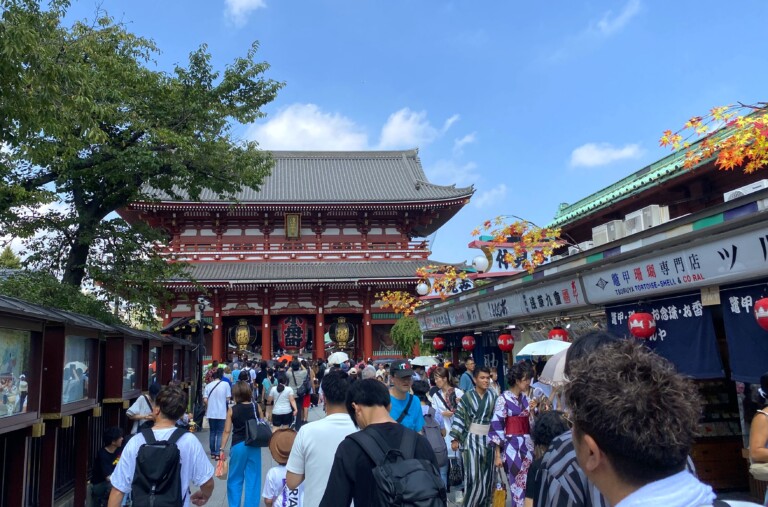
Nakamise Street
Nakamise Street is a historic shopping street in the Asakusa district, believed to be several centuries old. Stretching 250 meters, the street is densely lined with small shops on both sides, selling traditional sweets and souvenirs, and leading from the “Thunder Gate” Kaminarimon to the main grounds of the Sensoji Buddhist Temple. Here, you can watch the baking of Tokyo’s traditional ningyo-yaki sweets, try crispy traditional crackers, and experience the vibrant and lively atmosphere of Japan’s usually serene capital.
Day 3
Meet your tour guide at the hotel lobby
Tokyo sightseeing: Tokyo Imperial Palace Square, Akihabara - a paradise for electronics, anime, and gaming enthusiasts, Shibuya Crossing, walk around Ginza
Back to the hotel
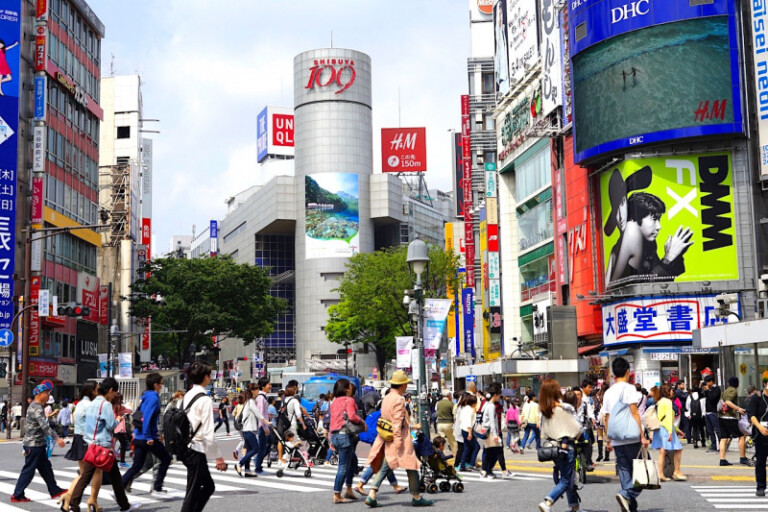
Shibuya Area
Shibuya scramble crossing is one of the busiest crossings in Tokyo. The green light comes on from four directions at once, and several hundred people (during peak hours, the number can reach 1,000) rush simultaneously in all directions, managing to dodge each other with ease built up over the years.
For its picturesque yet orderly crowds, the crossing is beloved by filmmakers, and people worldwide are familiar with it from TV series, movies, and commercial videos. The best spot to watch the hypnotic flow of people is the Starbucks coffee shop on the 2nd floor of the building on the north side of the crossing.
There is also a statue of the faithful dog Hachiko near Shibuya Station, where he used to meet his master, a professor at Tokyo University, every day. After the professor’s sudden death, the dog came to the station every day for nine years, waiting for his master to return. Hachiko became the symbol of loyalty.
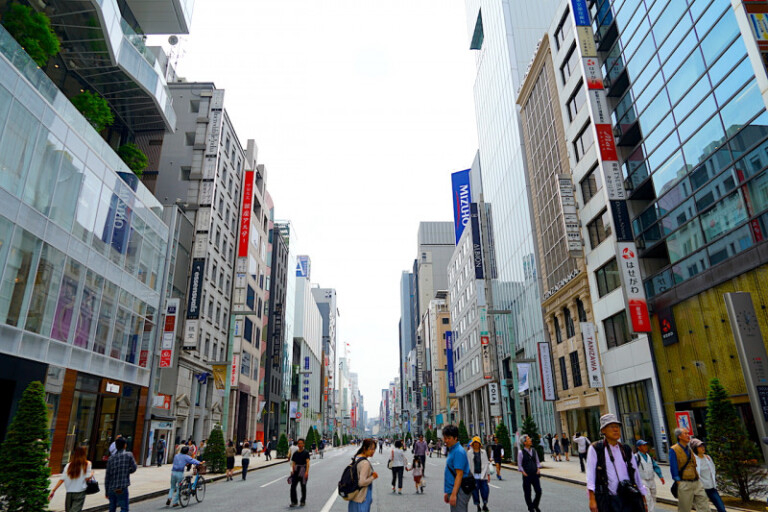
Ginza District
Ginza is Tokyo’s most luxurious shopping district, home to prestigious department stores, world-famous designer boutiques, coffee shops, and traditional Japanese restaurants. People come here to learn about the latest high fashion trends and enjoy the creations of the best architects worldwide.
At the same time, Ginza is an art lover’s paradise. There are about 200 art galleries and Kabukiza Theater, which still regularly hosts Kabuki theater performances.
Day 4
Meet your tour guide at the hotel lobby
Kamakura sightseeing: Hasedera Temple, Great Buddha of Kamakura, Tsurugaoka-hachimangu shrine
Back to Tokyo
Day 5
Meet your guide at the hotel lobby
Move to Hakone
Hakone sightseeing: volcanic valley Owakudani, the Hakone Open-Air Museum, black eggs
Transfer to the national-style ryokan hotel
Dinner at the hotel, rest in the hot springs
Day 6
Meet your guide at the hotel lobby
Move to Fuji-Kawaguchiko area by private transport
Fuji-Kawaguchiko area sightseeing by private transport: Lake Kawaguchiko, Chureito pagoda, Shiraito waterfall
Transfer to the national-style ryokan hotel
Dinner at the hotel, rest in the hot springs
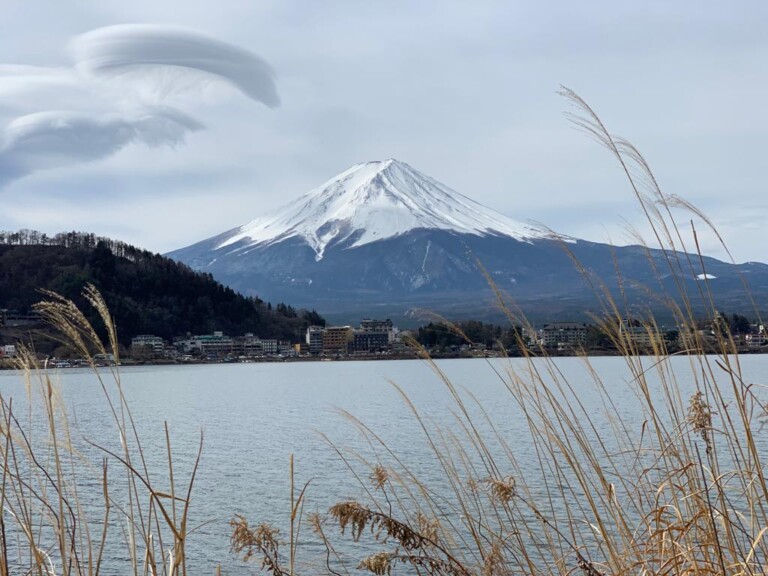
Mount Fuji
Fuji is an active stratovolcano on the Japanese island of Honshu, 100 kilometers southwest of Tokyo, on the border of Shizuoka and Yamanashi prefectures. The height of the volcano is 3,776 m. The circumference of the volcano’s base is 125 kilometers, and the diameter is 40-50 kilometers. The crater’s rim is about 500 meters, and the depth is about 250 meters. There are eight peaks around the crater, each with its name. The highest point of Fujisan is Kengamine Peak. The volcano is active; the last eruption was back in 1707-1708.
The mountain and its surroundings are part of the Fuji-Hakone-Izu National Park and have been a UNESCO World Heritage Site since 2013.
There are a Shinto temple, a post office, and a weather station on the top of Mount Fuji.
The mountain has a perfect conical shape and is considered sacred, serving as a religious pilgrimage and a tourism site. For centuries the beautiful outline of Fuji has been a popular theme in Japanese art.
Day 7
Meet your guide at the hotel lobby
Fuji-Kawaguchiko area sightseeing by private transport: traditional village, Lake Saiko
Move to Matsumoto
Check-in at the hotel, rest
Day 8
Meet your guide at the hotel lobby
Matsumoto sightseeing by private transport: Matsumoto Castle, walk around Matsumoto city
Move to Hida-Takayama
Check-in at the hotel, rest
Day 9
Meet your guide at the hotel lobby
Hida-Takayama and Shirakawa-go village sightseeing by private transport: Takayma-jinya, the old streets of “Little Kyoto” - Takayama City, Shirakawa-go observation deck, gassho style traditional house
Move to Kanazawa by private transport
Check-in at the hotel, rest

Takayama
The city of Takayama, located in the Hida mountain region, has been known since the Middle Ages for its artisans, who were even invited to build the Imperial Palace in Kyoto. The old city area has the atmosphere of medieval Japan: traditional houses with numerous stores and small museums (including the museum of the famous Takayama Matsuri festival), restaurants, and cafes. A market of local products opens every morning on the old city square.
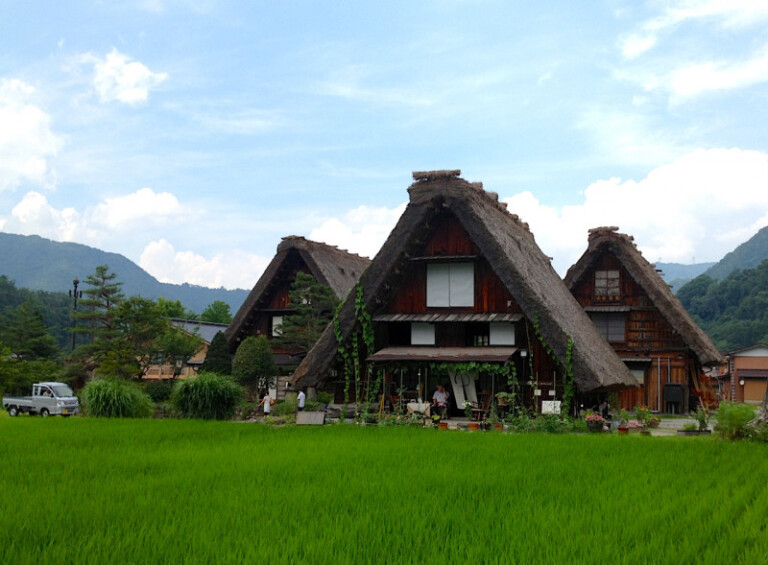
Shirakawa Village
Shirakawa-go (Shirakawa Village) in Gifu Prefecture and Gokayama Village in neighboring Toyama Prefecture are UNESCO World Heritage Sites and “an example of traditional life adapted to the environment.” The Shirakawa-go lies in the heart of the Japanese Alps and is surrounded by mountains. Its geographic location and climate make it one of the snowiest places in Japan. This has led to a unique local architectural style, gassho-zukuri, meaning “palms folded in prayer,” which is what the pointed, reed-covered roofs of the houses resemble.
Day 10
Meet your guide at the hotel lobby
Kanazawa sightseeing: Kenrokuen Garden - one of Japan's three most beautiful landscape gardens, Omicho market, Higashichaya traditional district
Move to Kyoto by train
Check-in at the hotel, rest
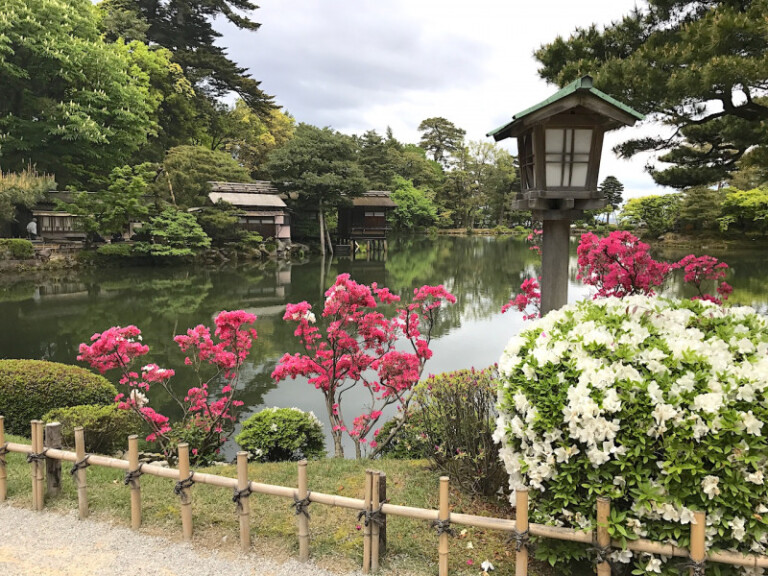
Kanazawa
Kanazawa, the “Golden Swamp,” is the capital of Ishikawa Prefecture and one of Japan’s most important cities. Kanazawa’s history dates to the end of the 16th century when Kaga Province came under the ownership of samurai Maeda Toshiie. Through the efforts of the Maeda clan, in a hundred years, Kaga Province turned from a poverty-stricken, war-torn region into one of the wealthiest feudal estates, with an income second only to the Tokugawa clan. The development of the Ishikawa gold mines, support of crafts, and close cultural ties with Kyoto contributed to this.
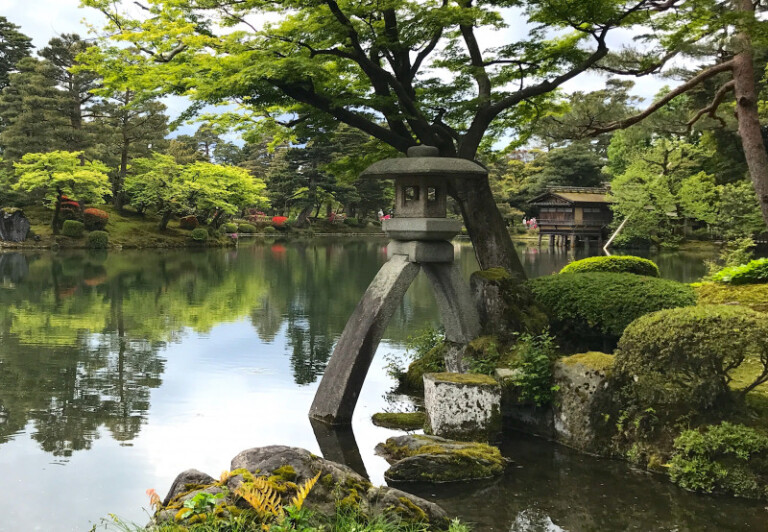
Kenrokuen Garden
One of Japan’s three most beautiful traditional gardens, the Garden of the Six Sublimities, was laid out in the second half of the 17th century near the walls of Kanazawa Castle for the enjoyment of the rulers of the Maeda clan.
The owners of Kanazawa Castle and the vassals of the Maeda clan who had access to the garden loved it for its beauty and harmony.
The name Kenrokuen, “The Garden of Six Sublimities,” was taken from the Song Dynasty Chinese poet Li Gefei’s “Chronicles of the Famous Gardens of Luoyang.” The book listed six virtues an ideal garden should have: spaciousness, seclusion, artificiality, antiquity, abundant water, and broad views.
Day 11
Meet your guide at the hotel lobby
Kyoto sightseeing: Golden Pavilion, Ryoanji temple, Arashiyama, Bamboo grove, monkey park
Back to the hotel
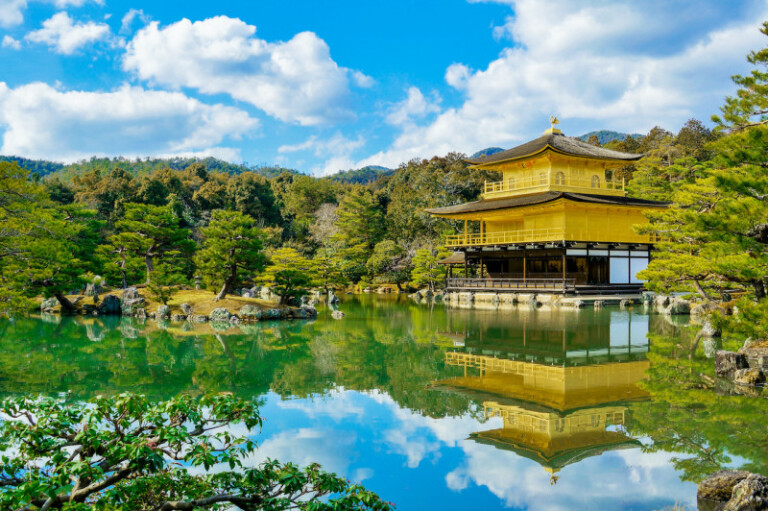
Kinkaku-ji (Golden Pavilion)
Kinkaku-ji Temple, often called the Golden Temple, is one of Japan’s most famous temples and Kyoto’s main attractions. Built at the end of the 14th century, this complex, with its three-story pavilion covered with gold leaf, captivated the minds of its contemporaries. The famous Japanese writer Yukio Mishima captured its fate and glory in the novel “The Golden Temple.” Today Kinkaku-ji Temple is a must-see on any traveler’s itinerary in Japan. In addition to the famous pavilion, the UNESCO World Heritage Site also features a traditional walking garden, small waterfalls, and a tea house, representing the culture of the samurai era.
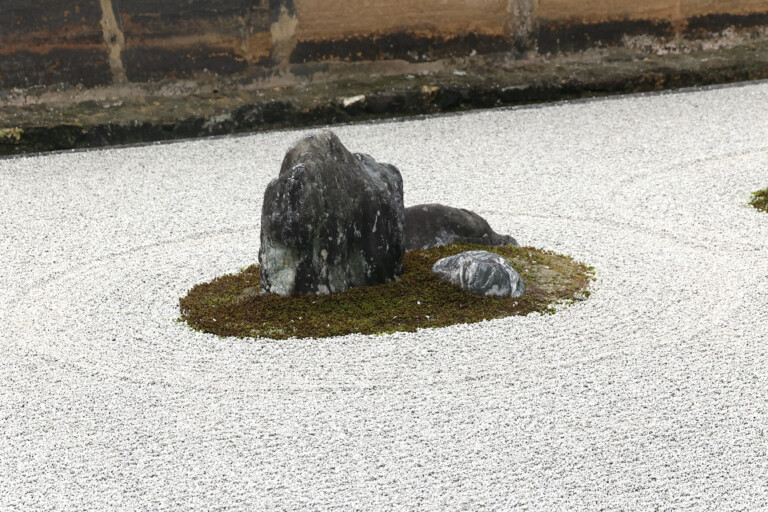
Ryoan-ji Temple
Ryōan-ji Temple, located in northern Kyoto, was founded in the mid-15th century. The famous rock garden was also established at the same time. The garden is now considered one of the best in Japan and is protected as a UNESCO World Heritage Site.
For centuries, the Ryōan-ji Temple garden has attracted visitors trying to solve its mystery: why can you see only 14 of the 15 stones? And what does the composition of sand and rocks represent?
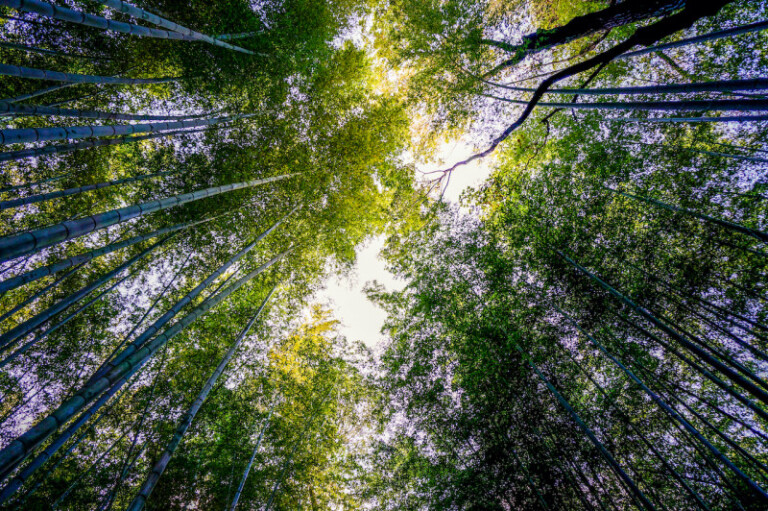
Arashiyama Bamboo Grove
Sagano-Arasiyama Bamboo Grove is one of Kyoto’s most popular and most photographed places. Everything here breathes with admiration for nature and love for detail. The path through the bamboo grove is carefully fenced off and cleared of dry leaves and branches. It’s an alley where you want to stroll, listening to the sounds of bamboo and the endless song of the wind. Bamboo doesn’t sleep; bamboo rustles and ceaselessly strives upwards. It’s a very hardy, fantastic plant!
Day 12
Meet your guide at the hotel lobby
Zen-meditation
Kyoto sightseeing: Kiyomizu-dera Temple, Gion geisha district,Yasaka Shrine
Back to the hotel
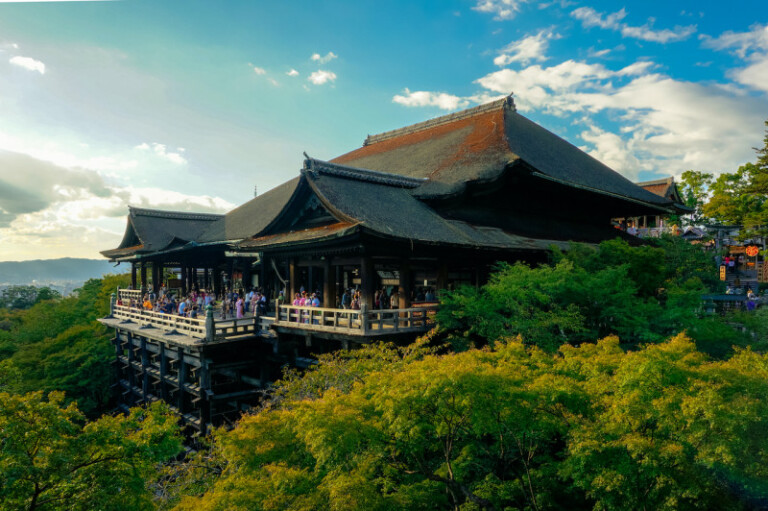
Kiyomizu-dera Temple (Pure Water Temple)
The Pure Water Temple, or Kiyomizu-dera, is one of Kyoto’s most famous and most visited temples and is a UNESCO World Heritage Site. It was founded on a mountainside near a spring. Its clear water is said to bestow health, longevity, and wisdom. The temple’s main attraction is its main hall, with an open veranda built on stilts over a cliff. The structure, assembled without a single nail, towers over Kyoto, offering a beautiful view of the old capital. Cafes and stores lining the road to the temple sell Kyoto sweets, ceramics, and souvenirs for all tastes.
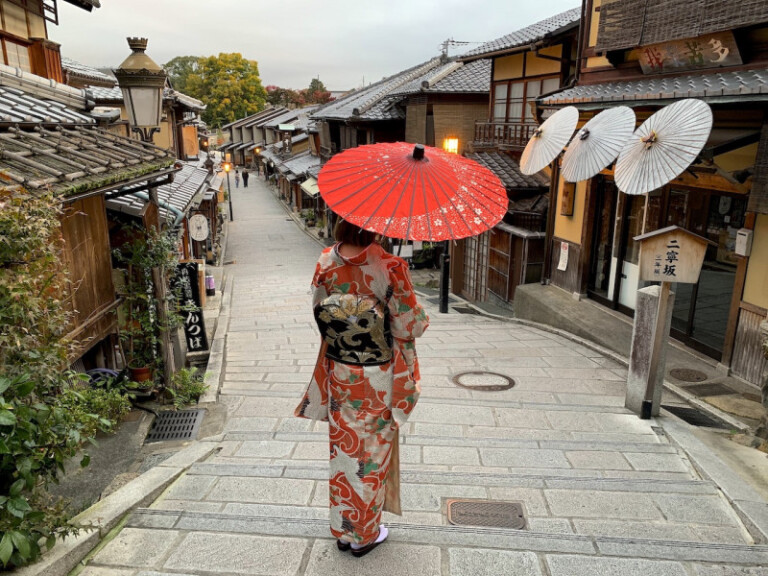
Gion (Geisha District)
Geisha district Gion is Kyoto’s largest and most vivid geisha district. Its history dated to the Middle Ages when restaurants and tea houses for pilgrims began to open around Yasaka Shrine. The picturesque streets of the district are filled with traditional houses with wooden facades, running rickshaws, geisha, and their apprentices (maiko), who still live in Gion and entertain guests every night with their dancing, talking, and table games.
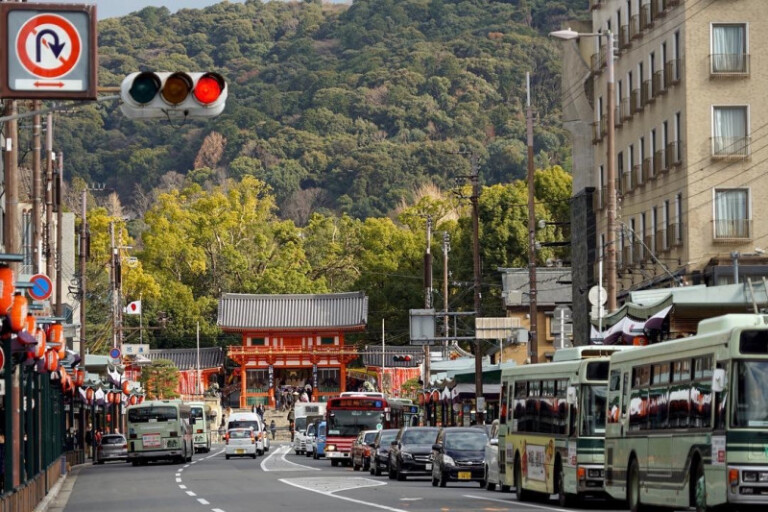
Yasaka-jinja Shrine
According to the legend, Yasaka-jinja Shrine was founded in 656 (almost a century and a half before Kyoto) and has long been loved by the citizens. When epidemics ravaged the country in 869, the emperor ordered a grand procession to the temple, and the deity Gozu Tenno stopped the disease. It was the beginning of Japan’s oldest and most colorful festival, Gion Matsuri. In Yasaka-jinja, you can pray to deities of family, beauty, and wealth and stroll through Maruyama Park to enjoy live music and see the rickshaws running around.
Day 13
Free day, shopping
Day 14
Meet your guide at the hotel lobby
Move to Nara
Nara sightseeing: Todaiji Temple, Kasuga Shrine, Deer park
Return to Kyoto
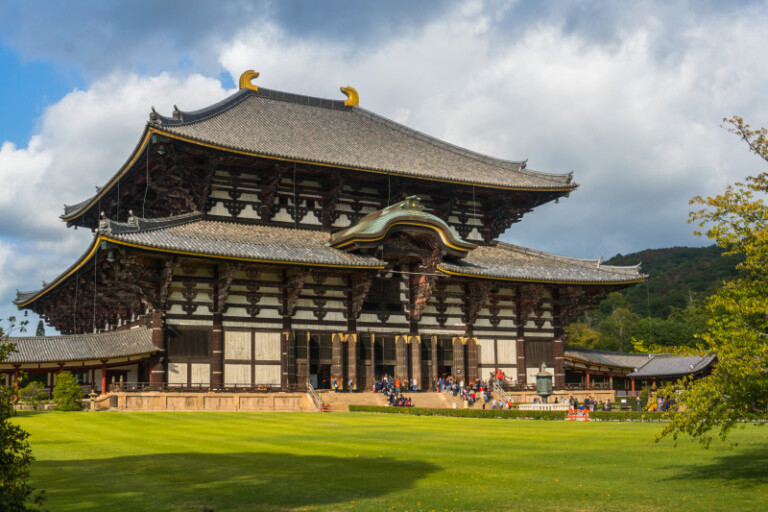
Todai-ji Temple
Todai-ji is a Buddhist temple complex whose main building is one of the largest wooden structures in the world. Built in the mid-8th century by order of the emperor with donations from all over the country, the temple features the biggest bronze statue of Buddha in Japan. Almost all the bronze produced in Japan at the time was used to cast the colossal sculpture. The complex also has several unique wooden structures, including the giant Nandaimon Gate with the famous Nio guard figures, the Bell Tower, and Nigatsu-do Hall. The entire complex is a UNESCO World Heritage Site.

Kasuga Shrine
Kasuga Taisha is one of Japan’s most ancient Shinto shrines, founded in the mid-8th century to protect the capital, Nara. A UNESCO World Heritage site, it is famous for its kasuga-zukuri architectural style, the thousands of stone and bronze lanterns decorating its grounds, and the pristine ancient forest where sacred deer, considered messengers of the deities, roam free.
Day 15
Meet your guide at the hotel lobby
Move to Osaka
Osaka sightseeing: Osaka Sightseeing by private transport: Osaka Castle, Umeda Sky building observatory, Dotonbori district
Check-in at the hotel, rest
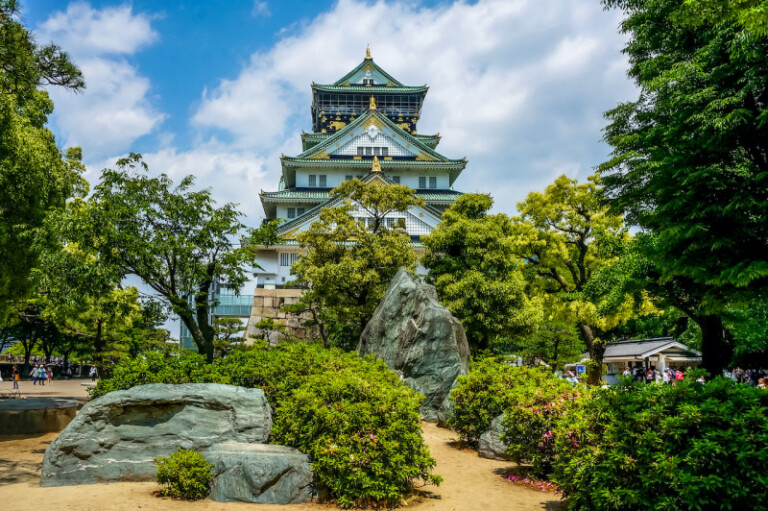
Osaka Castle
Osaka Castle, one of the most famous castles in Japan, was built in the late 16th century by the feudal lord Toyotomi Hideyoshi and was one of the best fortifications of the time. The castle was burned during the civil conflicts of the Meiji Restoration in the mid-19th century and was rebuilt in the early 20th century with concrete. Destroyed during the bombing of World War II, the castle was rebuilt again in the 1990s and is now one of Osaka’s most popular tourist attractions.
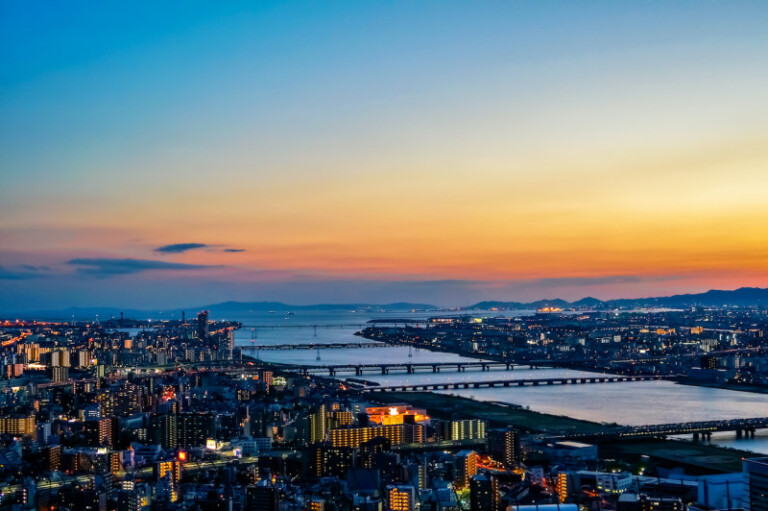
Umeda Sky Building
Designed by architect Hara Hiroshi in 1993, this 173-meter building is the 19th tallest in Osaka and one of the most notable parts of the cityscape. Two forty-story towers are connected at the top by Floating Garden Observatory, whose glass verandas offer beautiful city views. The basement floor, with stores and restaurants, resembles a Japanese city street of the early 20th century. Various companies’ offices occupy the building. There is a lovely park with fountains at the base of the towers.
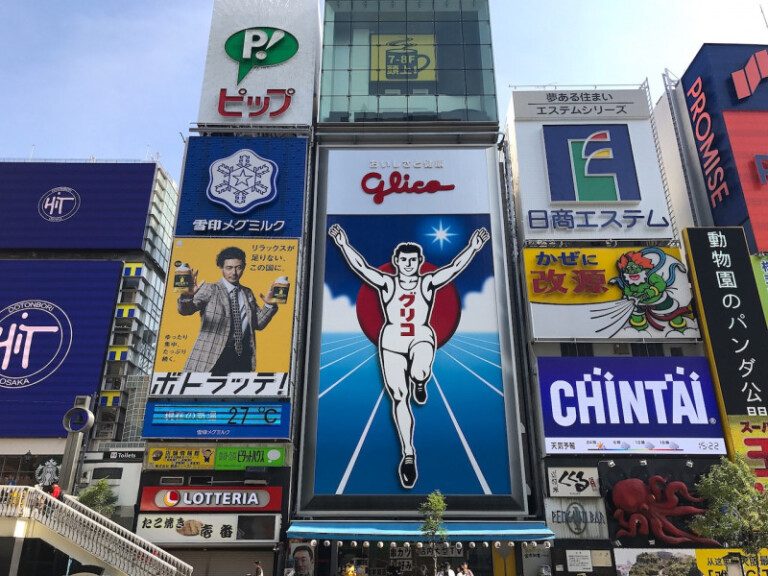
Dotonbori District
Dotonbori is a neighborhood that stretches along the Dotonbori canal between Dotonboribashi Bridge and Nipponbashi Bridge. The history of Dotonbori goes back four hundred years. In the early 17th century, this area was designated for entertainment venues by a government decree. By the end of the Edo era, there were six Kabuki theaters, five Bunraku theaters, and other smaller establishments. A restaurant area eventually grew around the theaters, and the district became one of the most popular places for evening entertainment for citizens and visitors. By now, there’s little left of the traditional theaters, but the area is still famous for its active nightlife, entertainment, and delicious food.
Day 16
Meet your guide at the hotel lobby
Move to the sacred mountain Koya-san
Koya-san sightseeing: Kongobuji Temple, ancient Okunoin Buddhist cemetery
Check-in at the monastery hotel "shukubo"
Vegetarian dinner at the hotel
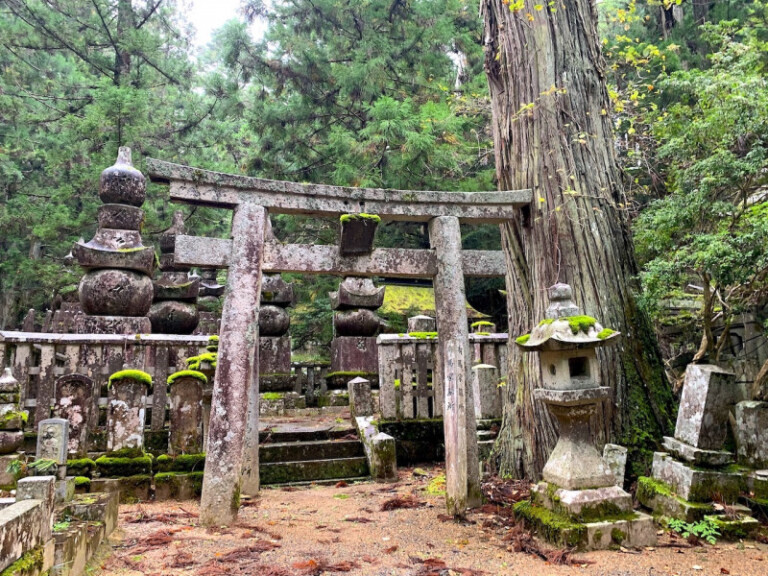
Koya-san (Mount Koya)
The Koya Mountain Monastery Complex is one of the most important centers of Buddhism in Japan, founded 1,200 years ago by the monk Kukai. In addition to its religious and historical value, it is also an important cultural monument. The majestic architecture of the complex, paintings by famous artists, unique artifacts accumulated over hundreds of years, the largest rock garden, and one of the oldest cemeteries in Japan – all of it provide a rare opportunity to have an insight into the Japanese philosophy of life and death.
Day 17
Meet your tour guide at the hotel lobby
Transfer to the Shinkansen Station
Move to Himeji by Shinkansen bullet train
Visit White Heron Castle Himeji-jo
Transfer to Okayama by Shinkansen bullet train
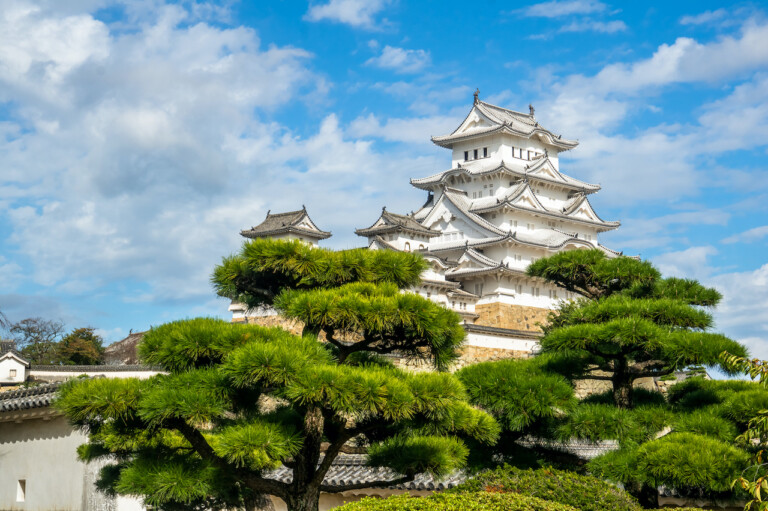
Himeji Castle
Himeji Castle is one of Japan’s 12 historically preserved castles and is considered the most beautiful. It is a UNESCO World Heritage Site. The castle was built in the early 17th century and was second in size and beauty only to the lost Edo Castle, the residence of the Tokugawa shoguns. Unscathed by wars, fires, and natural disasters for 400 years, the castle is often featured in movies about the samurai era. Fans of classic Japanese cinema remember it for Akira Kurosawa’s “Ran.” The impregnable castle holds secrets of Japanese military strategy and keeps stories of gods and ghosts. The name “White Heron Castle” reflects the beauty of its walls.
Day 18
Meet your guide at the hotel lobby
Okayama and Kurashiki sightseeing: Korakuen Garden - one of the Three Great Gardens of Japan, Kurshiki bikan historical quarter
Move to Hiroshima by Shinkansen bullet train
Check-in at the hotel, rest
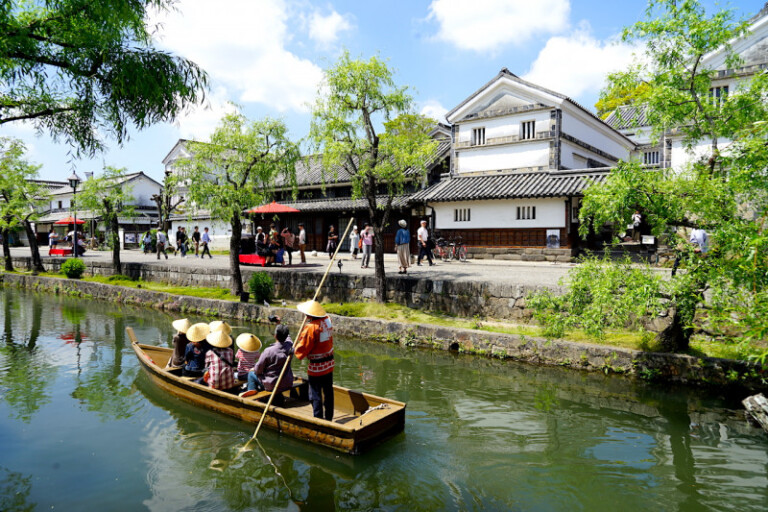
Kurashiki Bikan Historical Quarter
The name of the city of Kurashiki translates as “the place with rice barns.” This name accurately describes the city, which emerged at the beginning of the 17th century as a port for transporting rice from Western Japan to Central Japan. Many wealthy merchants of Western Japan built warehouses (“kura” in Japanese) in the port of Kurashiki to store rice before it was shipped to the port of Edo. During the Edo era, the city’s rulers dug a canal to quickly deliver rice from storage to the port.
With the modernization of Japan that began in the late 19th century and the construction of railroads, the river port of Kurashiki gradually lost its importance. Later, modern (early 20th century) businesses emerged there. The unique area around the canal, built up with traditional, white-walled buildings, was decided to be preserved. Now the Bikan area is a cultural treasure of Okayama Prefecture and Japan.
The old rice storage units have been modernized and converted into small museums, hotels, restaurants, and stores. You can take a ride on the canal in a traditional boat that was used to deliver goods two hundred years ago.
Day 19
Meet your guide at the hotel lobby
Move to Miyajima Island
Walking tour at Miyajima: Otorii Gate - one of Japan's three most beautiful landscapes, Itsukushima Shrine
Check-in at the hotel on Miyajima Island
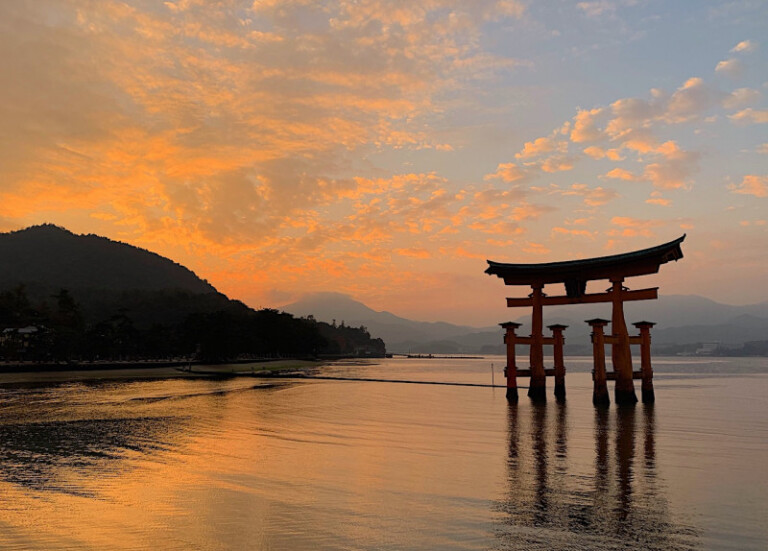
Itsukushima Shrine
Itsukushima Shrine is one of Japan’s most famous Shinto shrines located on the island of Itsukushima (also known as Miyajima Island). The sight of the main torii gate set in the sea is one of Japan’s three most famous views. The shrine was founded in the 6th century and took its present form in the 12th century when it was extensively expanded and rebuilt by Taira no Kiyomori. The buildings we see today were built in the mid-16th century, although they are similar in design to those of the Taira clan era. The “floating” shrine is a UNESCO Cultural Heritage Site and a National Treasure of Japan.
Day 20
Meet your guide at the hotel lobby
Transfer to the shinkansen station
Move to Tokyo by Shinkansen bullet train
Check-in at the hotel, rest
Free time, shopping
Day 21
Meet your tour guide at the hotel lobby
Transfer to the airport by private transport with a guide
Departure
